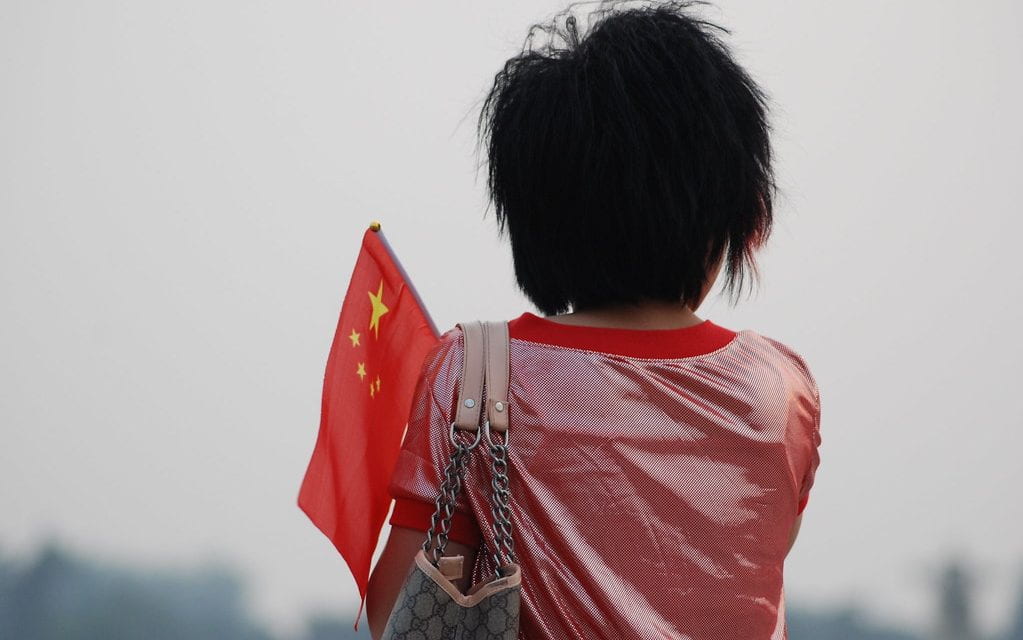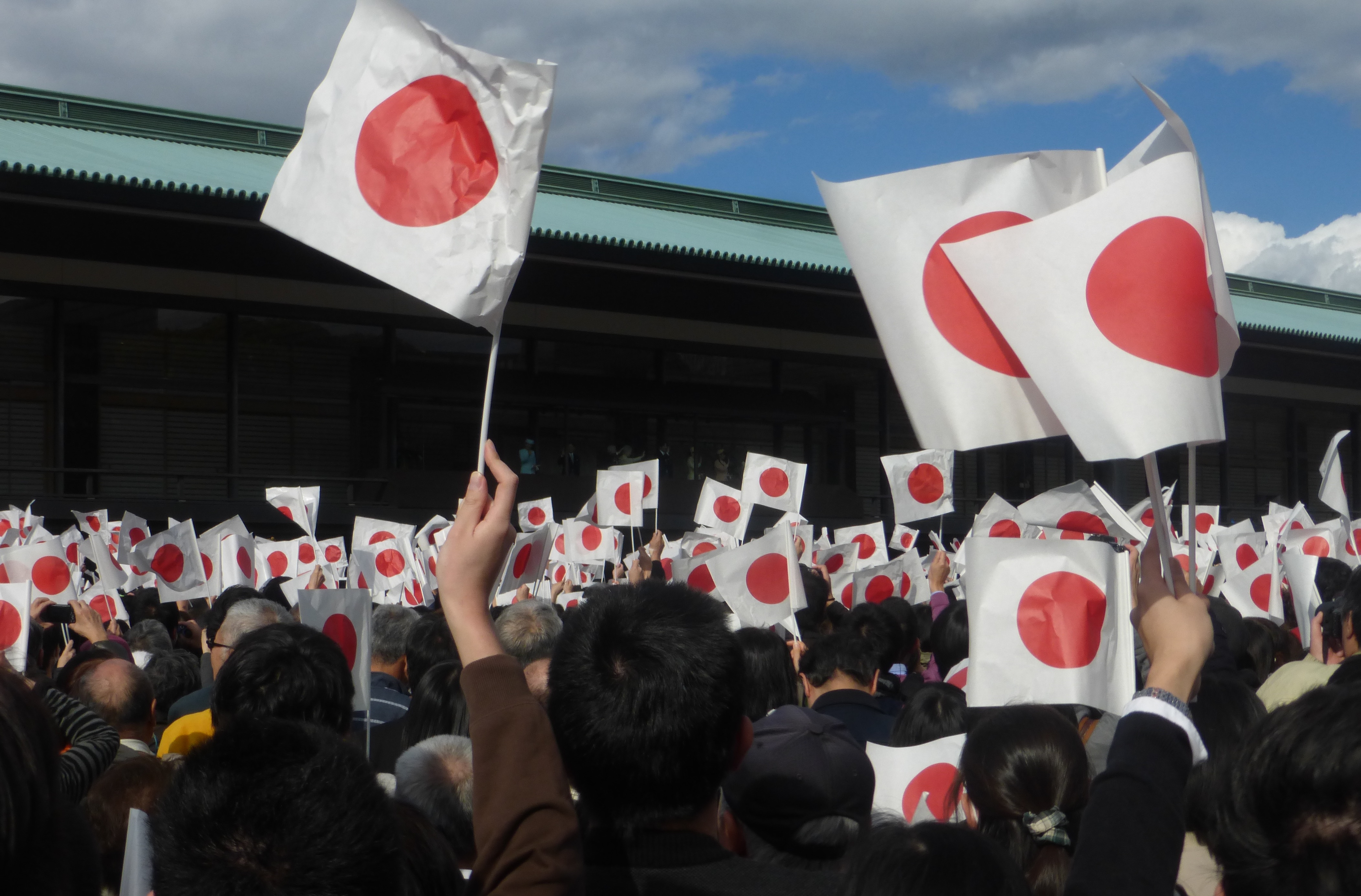Introduction
In September 2021, the Chinese central government pledged to enact a policy to restrict all abortions aside from those medically necessary. With about nine million women in China obtaining abortions annually, the commitment will have a considerable impact on the health of Chinese women, the opportunities within society, and the future of China and its population [1]. Beijing’s attempts to hinder the availability of abortions is simply another coercive measure to manage China’s population by regulating reproduction. Central family planning in China should be repealed completely, giving families the power to make reproductive decisions.
The Chinese government has long interfered with family planning through restrictive policies aimed at minimizing population growth. The one-child policy, which ended in 2015, had detrimental effects on the Chinese population, creating a dwindling workforce and a surplus of men to women. The centrally planned one-child policy was poorly evaluated and far from sustainable. It created violations of women’s rights and an unsustainable population base, lacking in both gender diversity and workforce eligibility.
Now, as the Chinese population ages, the Chinese government pursues methods to promote population growth. With its new commitment to reduce abortions in China, the concern regarding Beijing’s interference in family planning and the possible negative effects are as relevant as ever. With a history of intrusive population growth policies implemented by the Chinese central government, there are growing concerns that attempts to restrict abortions within China will harm women’s rights and the population, sabotaging a sustainable future.
Historical Background
In the mid-20th century, China suffered from the Great Famine, where millions of Chinese citizens died due to the government’s lack of resources. China’s centrally planned economy was strained, stretching resources across a booming population in attempts to combat food insecurity. Simultaneously, China industrialized, and much of the agricultural sector transferred to steel production. This combination ushered in the Chinese era of the Great Famine, from 1958 to 1961.
Although the Chinese government documents the deaths due to the Great Famine at 15 million lost lives, estimations place the death toll as high as 45 million [2]. While the exact death toll is disputed, it is highly regarded as the deadliest famine in modern history. The Great Famine brought negative attention and embarrassment to China during a period when communism was ideologically challenged internationally. The extreme poverty, perpetuated by the communist government’s inability to care for its population, exposed an unstable regime.
After the Great Famine, the birth rates among the Chinese population dramatically increased. In the decade following, the birth rate averaged nearly 27 million births per year. Due to limited economic and social resources, the Chinese government attempted to promote family planning and contraceptives to manage the ever-growing population. Mismanagement of population growth ran the risk of inducing another deadly famine and undermining the weak communist regime.
In 1980, the Chinese population surpassed 980 million [3]. That year, China implemented the one-child policy with the goal of beginning the millennium with a national population below 1.2 billion people. Beijing favored economic development and the power accompanied by industrializing into a global economy. Uncontrolled population growth risked national economic development goals and strained the centrally planned economy. Prominent Chinese scientists and scholars forecasted that a population of 1.2 billion or less by the year 2000 was necessary to meet China’s economic targets. The scientists estimated that, by 2000, if every Chinese couple had only one child the population would be below 1.2 billion, but if couples had two or three children the population would grow above the targeted goal [4].
The Chinese central government implemented the one-child policy with a narrow lens and the desire to prevent the resource strains of overpopulation. The policy made it illegal for government officials, factory workers, and urban residents to have more than one child. In extremely rural areas, a second child was permitted if a couple’s first child was female. Ethnic minorities could also legally have two children.
To enforce the policy, the National Family Planning Commission was established [5]. If a couple violated the policy they faced crippling fines, job loss, and forced abortions and sterilizations. Any child born outside the parameters of the policy could not be documented, restricting the child from education, healthcare, and, later in life, employment. Although the exact number of undocumented children is unclear, in 2015 the Chinese government registered 13 million undocumented citizens following the repeal of the one-child policy [6].
The enforcement of the unsustainable one-child policy led to gender disparities in the heavily male population and gross human rights violations against a woman’s reproductive rights. With a desire to gain economic power, China victimized millions of women. The policy was created as a means of economic and regime security, but it was repealed amidst fears that the aging population would lead to economic instability and threaten the regime.
Due to the one-child policy, the contemporary Chinese population is disproportionately elderly, creating concerns around the limitations in the working population. The current population also has an unnaturally high ratio of males to females, as a male child is typically preferred to a female child in Chinese culture. Many families went to extremes to ensure their one child was male, as sex-selective abortions became commonplace. Now, as the Chinese population ages, the workforce continues to shrink, creating a dire need for gender-equal population growth despite a cultural system designed to deter exactly that.
As of 2018, there are 112 men ages 15 to 29 for every 100 women ages 15 to 29, with the male population outnumbering the female population by almost 34 million [7]. This gender gap forces millions of eligible Chinese men to never get married, further hindering healthy population growth today. The inability to repopulate the workforce is only half the concern, as the gender gap has created public safety issues for women. The competition for brides has caused a surge in human trafficking and violence against women in China [8].
Women’s rights were brutally violated as forced abortions were performed on unconsenting and unconscious women. As a measure of enforcement, women were forcefully sterilized, given abortions and intrauterine devices against their will, and imprisoned for attempts to flee to have a second child elsewhere. Another attempt to hinder population growth through family planning was the criminalization of becoming a mother under the age of 23. Beijing enacted these harsh measures, victimizing women in the name of a population goal that was inherently to bolster the government’s economic power.
Women who violated the policy and became pregnant with a second child were routinely kidnapped by government officials and forcefully sedated, only to wake up no longer pregnant, sterilized, and with permanent damage to their reproductive health. These violations of women’s rights were legally justified, giving women no protection against the non-consensual procedures and no course of action afterward. As healthcare facilities were run by or worked closely with the central government, women had few options to avoid the intrusive policy. Only eight years into the implementation of the one-child policy, nearly 17 percent of all married Chinese women had fallen victim to at least one forced abortion [9].
These intrusive enforcement measures devastated women’s mental health and, by the 1990s, more than half of female suicides worldwide occurred in China, making China the only country where female suicide rates are higher than male suicide rates [10]. In 2000, China had a female suicide rate of 14.7 per 100,000 people and a male suicide rate of 13.9 per 100,000 people. That dwarfs the rate in other countries, as in 2000 the United States had a female suicide rate of 4.5 per 100,000 and South Korea had a female suicide rate of 9 per 100,000 people [11]. Internationally, the female suicide rate in 2000 was 9.1 per 100,000 people [12].
China’s Current Population Crisis
The one-child policy created tragic adverse effects for Chinese women and families. Women were brutalized and violated, having their families controlled with no consent of their own, all for the betterment of the Chinese government. Chinese women were forced to sacrifice their desired families to preserve the Chinese regime in the face of economic instability. Beijing chose societal family planning over the well-being of its people, the effects of which are clear today.
After decades of repressing population growth in the name of central planning, Chinese leaders now see a need for a younger population, setting the stage for a new era in central family planning. After the one-child policy was repealed in 2015, couples were permitted to have two children. In May 2021, Beijing changed the child limit from two to three children for married couples [13].
The decision to allow more children per family reflects the government’s concerns over the population’s age demographics. The vast majority of the population is elderly, and as more individuals retire or pass away, the workforce shrinks. Because the population is also overwhelmingly male, the workforce cannot be sustainably repopulated while so many men of reproductive age will never marry and have children.
Despite enforcing the two children per family policy for five years, the 2020 birth rate, at 12 million births, was the lowest annual population growth since the Great Famine in 1961 [14]. The fertility rate within China is currently 1.3 births per woman [15]. The United Nations Department of Economic and Social affairs cites 2.1 births per woman to be the replacement fertility rate, or the necessary birth rate to evenly replace a dying population, yielding a population growth neither negative nor positive. According to the UN, failing to meet the replacement fertility rate leads to “negative population growth and extinction of population in a long term,” [16]. China’s current predicament proves that changing a national policy cannot simply change a national social stigma and a culture ingrained in the people through decades of repressive government policies.
China has begun to recognize the dangers of below-replacement fertility rates. The labor force continues to shrink and the Chinese population becomes increasingly less sustainable for the government and the people, thus the new restrictions on abortion. Now, China’s vague plans to reduce abortions, which for decades were legal and encouraged or mandated by the government, represent yet another form of population control.
Subtle restrictions on abortion have been implemented in China since the 2015 two-child policy was announced, starting in 2016 with the ban on sex-selective abortions. China continues to choose central planning to control families. Beginning in 2018, women have been required to complete a form detailing future plans for contraceptive use and family planning to receive the procedure [17].
As a result of the Chinese government’s long history with forced abortions and family planning, the recent announcement pledging to limit all non-medical abortions is met with skepticism and mistrust. Although the current plan, framed in a document regarding women’s rights, contains little detail as to how abortions will be restricted, it continues the pattern of intrusive family planning methods used by the Chinese government. Just as the one-child policy proved harmful to Chinese development, so will the current efforts to promote increasing birth rates by reducing abortions. Women will once again fall victim to controlling government policies, as China’s historically reactive population control measures are enforced with little analysis of future effects.
An Unsustainable Future
Central planning is less than sustainable. Stretched over a booming population, attempts to control population size and family matters are bound to fail through adverse effects, as the one-child policy has. Despite attempts to preserve the Chinese economy while evolving into a global powerhouse, China has fundamentally undermined its workforce, hindering economic progress in the long term. The gaps created by China’s central family planning will only increase and present themselves in new ways as time goes on.
If attempts to increase birth rates do overcome the social and cultural barriers, what is next? Is the Chinese central government prepared for an influx of population growth? Are resources available, both within family units and at the governmental level? Many couples continue to have only one child due to the high cost of raising children in China. Rather than thinning resources by having multiple children, parents are putting funds towards housing and better education for their one child. The highly competitive nature of China’s education system drives parents in cities to place their children in expensive after-school tutoring programs and extracurriculars.
Raising multiple children is a financial burden for Chinese parents, deterring them from having more than one child even if they would like a larger family. A Chinese middle-class urban family is likely to spend about a third of their income on raising a child, while an American family of the same financial status would only spend a fifth of their income on one child [18]. Although financial statistics are hard to gauge and compare between China and the US, many Chinese families are finding the increased standard of living more attractive than raising multiple children. Chen Huijuan, a Chinese school teacher, wife, and mother of one, stated “I will never consider having a second child. It is too expensive,” [19].
If the reduction of abortions does increase the number of children per family, many Chinese families will experience financial strain and hardship. Families would be forced to give their children education of less quality while struggling to find housing large enough in cities for more than three people. The vast majority of Chinese families continue to have only one kid because they are financially unprepared to have a second. The central government’s efforts to coerce families into having two or three children will cause financial strain and a lower quality of life for millions of urban, middle-class families. Is China prepared to provide the public goods when families need extra support or will they resort to forced relocations and other coercive population control methods to reallocate resources once more?
A boom in China’s population would likely overpopulate the dense Chinese cities, straining public resources. Both the healthcare and the public education systems would be overwhelmed. From 1980 to 2015, a second child was only permitted in the most impoverished and remote rural areas. In cities, if a second child was born, the child was not allowed to be registered. For over three decades the public systems provided by the Chinese government were designed to accommodate one child per family. Attempting to reallocate resources to accommodate population growth will deprive other sectors of public need, such as national security, and limit China’s ability to protect its population.
Policies regarding family planning and population control have been historically created and enforced with little lens to the effects on other sectors of public life. Now, as couples are encouraged to have more children, will the resources be increased to meet needs? Due to the recent limitation on abortions, the education and healthcare systems within China will prove to be unsustainable, as it is not within their structure to accommodate a sharp growth in population. Consequently, the standard of living for middle-class families will decrease, as they no longer have the same control over having less than two children, limiting personal family resources all while the volume of public resources decreases.
Conclusion
In the end, it is the Chinese central government that created an unsustainable future for its own people who are relying on a workforce that cannot provide resources for its large population. While Beijing may not care for its women and people in general, it is the economic effects that catch the government’s attention. Once more, China has weakened the base of its economy, its workforce, threatening the stability of the regime. Rather than learning from past mistakes, the government continues to use coercive, intrusive, and inappropriate national policies to control the population.
Just as the one-child policy had adverse effects on the future of China, so will the reduction of non-medical abortions. If the one-child policy is evaluated for enforcing its original goal, it was a great success. The Chinese government did exactly as planned: dramatically stunted population growth. Eradicating non-medical abortions will likely be met with the same success: women will not obtain a safe and legal abortion without a medical reason.
However, it is focusing on these goals with little perspective to the inevitable ripple effects that led China into this economically and socially threatening situation in the first place. As China continues to rely on central planning that enforces intrusive policies with the snap of a finger, the Chinese population will always be victimized by the adverse effects, leading the Chinese government to only maintain coercive practices further down the road with a new but narrow as ever lens to national necessity.
To preserve the regime, protect the population, and respect women’s rights, Beijing should end all measures of central family planning. In China, women continue to fall victim to the government’s reactive policies. The population as a whole will suffer with abortions restricted, as the standard of living decreases. Yet, it is Chinese women who will experience the most tragedy. From one extreme to the next, Chinese women have never been given much of a choice, instead having the humanity and womanhood stripped from them as women are told they either will or will not have more children for the betterment of the Chinese government.
Citations
[1] Vivian Wang (2021, September 27). China’s vow to reduce abortions sparks public worries. New York Times. https://www.nytimes.com/2021/09/27/world/asia/china-abortion-limits.html.
[2] Zhihe Wang, Ming Yang, Jiaming Zhang, Jiang Chang. (2016). Ending an Era of Population Control in China: Was the One-Child Policy Ever Needed? American Journal of Economics and Sociology, 75(4), 929–979. https://doi.org/10.1111/ajes.12160
[3] World Bank Group. (2020). Population, total – China. Data. https://data.worldbank.org/indicator/SP.POP.TOTL?locations=CN.
[4] Ibid.
[5] Ibid.
[6] Ibid.
[7] Simon Denyer & Annie Gowen. (2018, April 18). “There’s too many men”: What happens when women are outnumbered on a massive scale. The Washington Post. https://www.washingtonpost.com/graphics/2018/world/too-many-men/.
[8] Ibid.
[9] Ibid.
[10] Ibid.
[11] World Health Organization. (2021, February 9). Suicide rate estimates, crude estimates by country. Global Health Observatory data repository. https://apps.who.int/gho/data/node.main.MHSUICIDE.
[12] World Bank Group. (2019). Suicide mortality rate, female (per 100,000 female population). Data. https://data.worldbank.org/indicator/SH.STA.SUIC.FE.P5.
[13] Lily Kuo (2021, June 1). Facing a demographic crisis, China to allow three children per family. The Washington Post. https://www.washingtonpost.com/world/asia_pacific/china-three-child-policy-demographic/2021/05/31/95a086e2-c1e8-11eb-89a4-b7ae22aa193e_story.html.
[14] Ibid.
[15] Ibid.
[16] United Nations Department of Economic and Social Affairs. (2015). World Fertility Report 2015: Highlights. United Nations. https://www.un.org/development/desa/pd/sites/www.un.org.development.desa.pd/files/files/documents/2020/Feb/un_2015_worldfertilityreport_highlights.pdf.
[17] Eva Duo. (2021, September 27). China seeks to reduce abortions, as Beijing pushes for more children. The Washington Post. https://www.washingtonpost.com/world/asia_pacific/china-abortion-women/2021/09/27/bdba51fa-1f60-11ec-a8d9-0827a2a4b915_story.html.
[18] Nanlin Fang & Lily Lee. (2019, February 13). Chinese couples can’t afford a second child, no matter what Beijing wants. CNN. https://www.cnn.com/2019/02/12/asia/china-second-child-economy-intl/index.html.
[19] Ibid.







